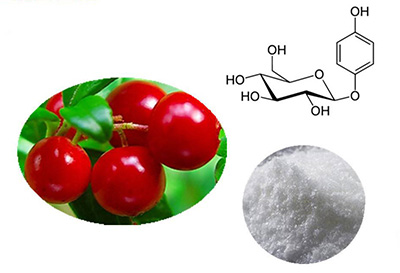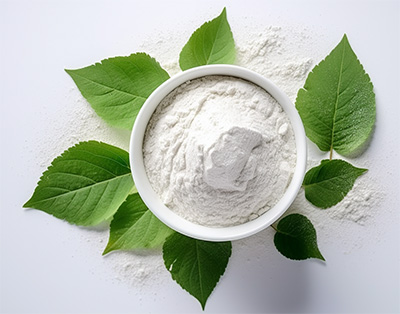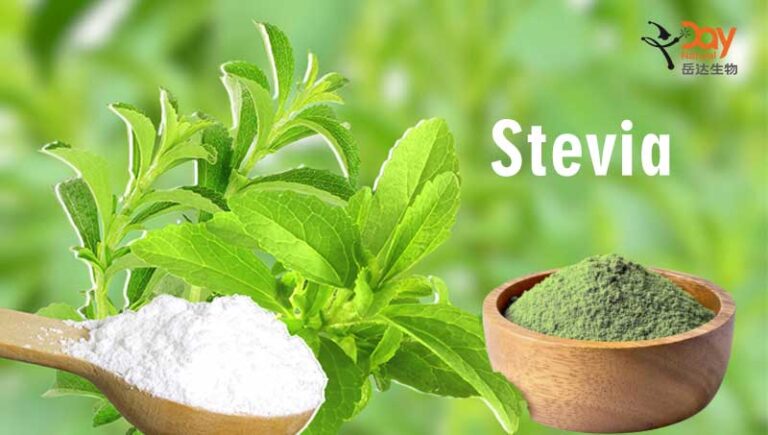Alpha Arbutin Uses
Can i use alpha arbutin with niacinamide?
Alpha arbutin and niacinamide (vitamin B3) are both common skin care ingredients, and they each have different benefits. alpha arbutin whitens skin by inhibiting tyrosinase activity, while niacinamide helps to improve uneven skin tone, reduce inflammation, and promote skin barrier function.

In theory, the two ingredients can be used together and usually do not cause significant adverse reactions. They act on the skin by different mechanisms, so using them together may be able to complement each other and provide a more comprehensive skin care effect.
However, the following points should be noted when using:
1. Individual sensitivity
Although both ingredients are generally safe, individual differences may cause some people to be allergic or uncomfortable with a particular ingredient. It is recommended to perform a small area test before using a new product to ensure that it does not cause skin irritation or adverse reactions.
2. Product compatibility
Different brands of products may contain other ingredients that may interact with alpha arbutin or nicotinamide. Choose high quality products with transparent ingredients and ensure that all ingredients are compatible with each other.
3. Order of use
It is generally recommended to use products with a mild acidic environment (such as products containing niacinamide), wait a few minutes for it to be fully absorbed before using alpha arbutin products, which can improve the absorption efficiency of the ingredients.
4. Daytime protection
Considering the photosensitivity of alpha arbutin, it is recommended to apply sunscreen after using products containing this ingredient during the day to prevent skin damage caused by ultraviolet light.
Can alpha arbutin be used with kojic acid?
Yes, alpha arbutin and kojic acid can theoretically be used together, and this combination is also common in modern skin-lightening products. Both of these ingredients have the effect of whitening and lightening spots, and help reduce the production of melanin in the skin through different mechanisms of action, so as to improve the uneven skin tone and lighten the skin tone.
Alpha arbutin: Reduces melanin synthesis mainly by inhibiting tyrosinase activity.
Kojic acid: Reduces melanin production by interfering with the conversion of tyrosine to dopamine (the precursor of melanin) during melanin production.
Their combination can produce a synergistic effect and enhance the whitening effect. It’s worth noting, though:
1. Skin tolerance
While both are effective whitening ingredients, when used in high concentrations or with sensitive skin, tolerance may need to be built up gradually to avoid unnecessary irritation or allergic reactions.
2. Timing of use
Considering the stability of arbutin and its possible photosensitivity, it is recommended to use products containing these two ingredients as part of a nighttime skin care routine or to enhance sun protection after use during the day.
3. Product formulation
The final suitability also needs to consider the specific product formulation, because different brands of products may contain a variety of other ingredients, which may also interact with each other.
Can alpha arbutin be used with vitamin c?
Yes, alpha arbutin and vitamin C (VC) can be used together, and this combination is more common in skin care because they have complementary whitening and antioxidant benefits. As a highly effective whitening ingredient, Alpha arbutin can inhibit the activity of tyrosinase and reduce the production of melanin, which helps to lighten skin tone and fade color spots. Vitamin C also has a strong whitening ability, it can inhibit the synthesis of melanin, neutralize free radicals, promote collagen production, thereby improving skin tone and enhancing skin elasticity.

The combination of the two can act on the production and metabolism of melanin from multiple angles, enhancing the overall whitening effect. However, please note the following points when using:
1. Stability
Vitamin C, especially some forms such as L-Ascorbic Acid, may be unstable in high concentrations or under improper storage conditions. Ensure that high quality, stable formulations are purchased and stored correctly according to the instructions.
2. Skin tests
Although alpha arbutin and vitamin C are usually compatible, each person’s skin condition is different, and it is best to do skin tests in a small area before using for the first time to confirm that there are no allergic reactions.
3. Photosensitivity
Vitamin C may increase the skin’s sensitivity to light under certain conditions, and sunscreen measures should be strengthened after use to avoid long-term exposure to strong sunlight.
4. Order of use
It is usually recommended to apply a strong penetrating ingredient, such as vitamin C, and let it be absorbed before using alpha arbutin products to optimize absorption.
5. Moderate use
High concentrations of active ingredients do not always mean better results, and excessive use may cause skin irritation. Follow product recommendations for usage.
In conclusion, the combination of alpha arbutin and vitamin C is safe and effective, as long as you pay attention to the above points, you can better develop their whitening potential.
Can alpha arbutin be used with retinol?
Alpha arbutin and retinol can theoretically be used together, but it is necessary to pay attention to the method and timing of use, because the two ingredients have their own characteristics, and retinols (retinoids) may have certain irritating and photosensitive properties.
Alpha arbutin is mainly used as a whitening ingredient to reduce melanin production by inhibiting tyrosinase activity.
Retinol is a powerful anti-aging ingredient that promotes skin cell renewal, reduces fine lines, improves skin elasticity and shine, but may also dry out skin and increase sensitivity to light.
Suggestions for pairing:
1. Use in time intervals
Because retinol may cause photosensitivity and dry skin, it is recommended to use at night, while alpha arbutin can be used in the morning and evening. If you want to use on the same day, you can apply the retinol product at night, wait for some time to fully absorb it, then apply the alpha arbutin product, or apply the alpha arbutin in the morning.
2. Establish tolerance
When using retinol products for the first time, it is necessary to gradually establish skin tolerance, starting from low concentrations, increasing the frequency of use every few days, and observing skin reactions.
3. Moisturizing and sun protection
It is important to strengthen moisturizing measures during retinol use, as retinol can accelerate the turnover of skin cells, which may lead to temporary decreased skin barrier function and dryness. At the same time, whenever you use products containing retinol or arbutin, you should strictly protect yourself from the sun, especially the day after using retinol.
4. Skin test
Before using a large area on the face, test on a small area of skin first to ensure that it will not cause discomfort or allergies.
In short, the combination of alpha arbutin and retinol can bring comprehensive whitening and anti-aging effects to the skin, but it must be carefully combined, pay attention to the reaction of the skin, and rationally arrange the use plan.
Can alpha arbutin be used with azelaic acid?
There are different opinions as to whether alpha arbutin and azelaic acid can be used together. On the one hand, theoretically they can be used at the same time, because arbutin and azelaic acid both have whitening and whitening effects, and through different mechanisms acting on the production and decomposition of melanin, they may have a synergistic effect and enhance the therapeutic effect. On the other hand, recommendations in practice tend to be more conservative, because both arbutin and azelaic acid have certain skin irritations, especially for sensitive skin, and simultaneous use may increase skin burden, resulting in skin redness, tingling, itching and other discomfort.

Therefore, if considering using both ingredients together, it is important to follow the following principles:
Skin test
Before formal use, test on a small area of skin to ensure that it will not cause adverse reactions.
Doctor’s guidance
It is best done under the guidance of a dermatologist, especially if your skin is of a sensitive type.
Gradual introduction
If you decide to use it at the same time, you can consider using it separately for a period of time to see how the skin ADAPTS, and then try to use the combination, and should start from a low concentration.
Pay attention to dosage and frequency
Control the amount of each product used, avoid overuse, and do not change skin care routines frequently to give the skin time to adapt.
Moisturizing and sun protection
When using these functional products, it is necessary to strengthen moisturizing and strict sun protection to maintain the health of the skin barrier.
In summary, although alpha arbutin and azelaic acid can be used together under certain conditions, caution should be taken and appropriate adjustments should be made according to individual skin conditions.
Can alpha arbutin be used with hydroquinone?
Although in theory both alpha arbutin and hydroquinone have whitening effects, it is understandable to want to enhance the whitening effect through their combination, but in practice this combination needs to be very careful. Consider the following points:
1. Irritability and safety
Hydroquinone is a powerful whitening ingredient, but it is also severely restricted or banned in cosmetics in many countries and regions due to its high irritability and potential side effects (such as skin sensitivity, burns, and even permanent pigmentation). alpha arbutin is milder in comparison, but the tolerance of the individual’s skin remains a concern.
2. Interaction
There is no direct research data on the specific interaction of alpha arbutin and hydroquinone on the skin, including whether it affects the stability and effectiveness of each other, or whether it increases the risk of skin irritation.
3. Alternatives
Due to the potential risks of hydroquinone, self-use of hydroquinone in daily skin care is generally not recommended unless it is used for specific medical purposes under the guidance of a professional dermatologist. Instead, consider using alpha arbutin in combination with other safer whitening ingredients (such as vitamin C, niacinamide, etc.) that are equally effective but less irritating.
In summary, for safety reasons, it is not recommended for non-professionals to combine alpha arbutin with hydroquinone on their own. If there is a strong need for whitening, it is recommended to consult a professional dermatologist to choose the most appropriate whitening regimen according to the individual skin condition.
Can alpha arbutin be used with hyaluronic acid?
Yes, alpha arbutin and hyaluronic acid can be safely used together. In fact, this combination is common in many skin care products because they each have complementary benefits:
-Alpha arbutin: Its main function is to inhibit the activity of tyrosinase and reduce the production of melanin, which helps to lighten the skin tone, improve the uneven skin tone, and achieve the effect of whitening and lightening spots.
– Hyaluronic acid: is a highly effective natural moisturizing factor that attracts and locks in large amounts of water, providing deep and long-lasting moisturizing effect to the skin, making the skin look fuller and smoother, and reducing the appearance of fine lines.
When used in combination, alpha arbutin focuses on improving skin tone and whitening, while hyaluronic acid hydrates the skin, keeping it hydrated and working together to promote skin health and vitality. This combination is suitable for dry skin needs deep moisturizing while pursuing whitening people, but also suitable for oily or mixed skin want to control oil while whitening care. When using, it is recommended to apply hyaluronic acid products to help hydrate the skin, and then use alpha arbutin products for targeted whitening care to maximize the best results of each.
Can i use alpha arbutin with glycolic acid?
Although the co-use of arbutin with glycolic acid is not recommended, especially for stability concerns, there is no direct information to indicate that there is a specific contraindication of alpha arbutin (alpha-arbutin) with glycolic acid. However, based on the general principle that arbutin is sensitive to acidic conditions, alpha arbutin may also be affected in the same way, that is, it may reduce its stability and whitening effect under acidic conditions.
Therefore, even for alpha arbutin, it is recommended to avoid direct mixing with acidic ingredients such as glycolic acid to protect the activity of alpha arbutin and ensure maximum whitening function. If you need to combine the two ingredients, consider using them separately for different skin care steps or different time periods, such as using alpha arbutin products in the morning to focus on whitening, and glycolic acid products in the evening to gently exfoliate and promote skin renewal, while keeping an eye on skin reactions, and strengthening skin moisturizing and sunscreen measures when using high-active ingredients.




Vyskytol sa problém s doručením, pretože USPS sa pokazil. Nie je to chyba predajcu. Dodanie tovaru trvalo jeden mesiac. Predajca mi poslal náhradu a ako sa patrí, jeden prišiel v sobotu ráno (po mesiaci čakania) a druhý prišiel v pondelok ráno po 5 dňoch čakania. Takže teraz mám dva produkty. Aby som dodal, obaja sú skvelí a som veľmi šťastný; najmä so zákazníckym servisom!
Your perspective on this topic is very interesting. Thanks for the detailed explanation.